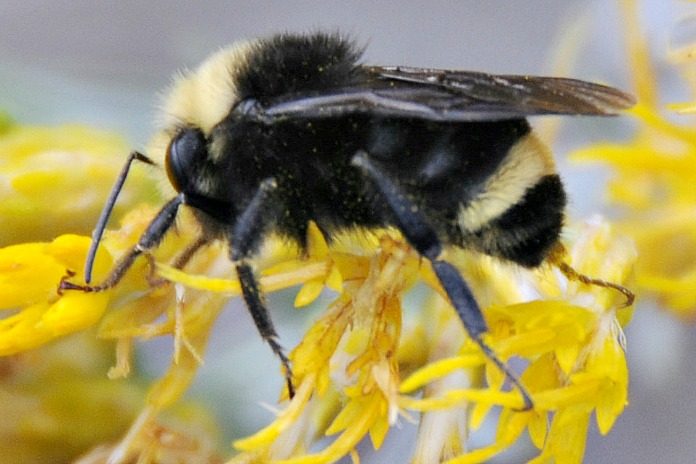
National Pollinator Week, June 19-25 this year, celebrates bees and other pollinators while also providing opportunities for all Oregonians to engage in activities centered around these important insects.
With no shortage of interest among farmers and the general public, Oregon continues to be recognized as one of the more proactive states in addressing pollinator health issues and understanding the importance of pollinators to the state’s diverse specialty crop agriculture.
The Oregon Department of Agriculture, Oregon State University, and a number of other collaborators want to make sure the special week provides a platform for more appreciation and better understanding of the role bees and other pollinators play throughout the year.
“We are trying to make the public aware of what great bee diversity and abundance we have in Oregon,” says ODA entomologist Sarah Kincaid, who focuses on pollinator issues. “We also want to highlight some of the pollinator-friendly practices our farmers are doing.”
About two-thirds of the world’s food and fiber crops depend on pollination for reproduction. Commercial honeybees and Oregon’s native bee population are critical to the future of the state’s agriculture. Understanding how people impact pollinators, both positively and negatively, is at the heart of outreach and education efforts conducted by ODA, OSU, and other interested groups.
Kincaid first wants to correct a common misconception about Oregon’s pollinators.
“Although bee decline has been documented around the world and the US, we do not have evidence to suggest that, generally, most of our bees are declining. They appear to be relatively stable and doing rather well. There are a few exceptions but, for the most part, our pollinators are pretty robust. I believe that’s tied to Oregon’s agriculture and natural resources.”
Oregon’s unique nature is connected to its climate and soils, which lead to the production of more than 200 crops that provide a symbiotic relationship with bees. Crops provide the bees with pollen and nectar for biological development, the bees pollinate the crops. Those 200 crops also create what Kincaid refers to as a “sequential bloom” that lasts throughout the entire growing season.
Part of Pollinator Week is also designed to educate consumers on their role in protecting bees.
“Homeowners are encouraged to use an integrated pest management approach in dealing with pest issues,” says entomologist Rose Kachadoorian of ODA’s Pesticides Program. “We don’t discourage anyone from using pesticide products, we just want everyone to be smart about it. We think plants, pesticides, and bees can co-exist. If homeowners can just avoid treating plants when they are in bloom, that is a real plus. In any case, you’ll want to read the pesticide label before you purchase the product.”
Planting bee-friendly plants is also a good way for consumers to help. This coming week will include a number of consumer-directed messages and tips on how to protect pollinators. Those messages will appear in a number of venues, including the launching of the Oregon Bee Project website. Initiated by a Specialty Crop Block Grant awarded by ODA last year, the project is designed to recognize, encourage, and support Oregon farmers and their efforts to protect pollinator populations. The project is supported by the long-standing unique experience of ODA’s Insect Pest Prevention and Management Program, which has identified important native pollinators and their impact on specialty crops. The Oregon Bee Project also involves research and public education. It’s the latter component that will get attention during National Pollinator Week.








